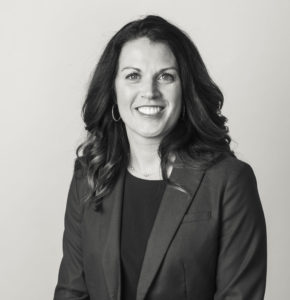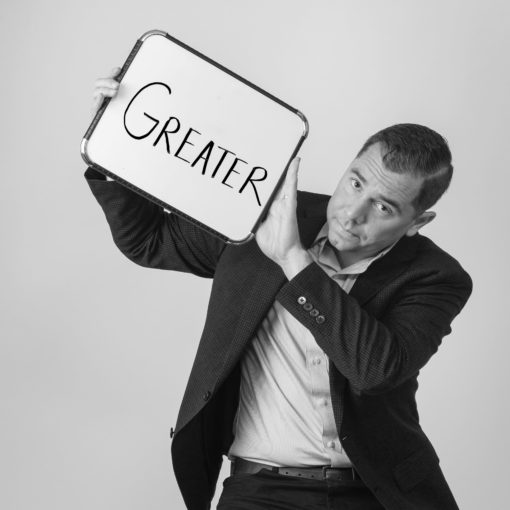
Jami Haberl | Executive Director, Iowa Healthiest State Initiative
The Idea: Cities should implement sidewalk reimbursement policies that allow businesses and/or residential property owners who repair, replace or build sidewalks to receive up to 100 percent reimbursement from the municipal government.
The future prosperity of Greater Des Moines depends on having happy and healthy citizens to lead it. Environments that are conducive to active lifestyles are key. The bike trails, parks and recreational areas our region boasts are – no doubt – great. But to make active living opportunities in the metro even greater, we must first ensure that basic walkability needs within neighborhoods are met.
We cannot connect city to city or region to region if the footpaths in our communities are in disrepair. Or if there are no sidewalks for children to walk to school. Or if walking routes are not accessible to the elderly or people with disabilities. Or if the only way to access a bus stop is by walking on a busy street.
Our region must make safe, walkable routes for its citizens a priority. The cities of Greater Des Moines should implement policies that allow businesses or residential property owners who repair, replace or build sidewalks to receive reimbursement, up to 100 percent, from the municipal government.
Greater Des Moines often looks to larger metropolises for inspiration and ideas to improve, but West Union, a town of 2,400 tucked into Iowa’s northeast corner, has made policy and infrastructure changes to promote walkability that our region can learn from, such as their Sidewalk Replacement/Construction Program.
The city of West Union offers 100 percent reimbursement, up to $1,500, for concrete and rebar when a citizen replaces or constructs a sidewalk on their property. The only thing required is a simple application. Commercial properties are also eligible for a 50 percent reimbursement. Property owners are still responsible for labor and tax.
The program has been on city books since 2013, but at that time only offered partial reimbursement. A few years later the city moved to 100 percent reimbursement rates for residential property owners, and since then West Union has seen about a dozen applications annually. The program is funded through a 1 percent utility franchise fee. The fee replaces the 1 percent local option sales tax that utility customers were already paying on their utility bills, so the program comes with no additional cost to West Union citizens.
Sidewalk reimbursement programs motivate individual property owners and businesses alike to do their part in securing safe and walkable routes in their communities and neighborhoods. Cities should seek creative funding opportunities, like through franchise fees in West Union, or simply make it a priority in their overall budget, as other cities, like Cedar Rapids and Sioux Center, have demonstrated.
The city of Cedar Rapids sees about 400 applications for reimbursement – at 35 percent, up to $1,000 – per year. They started the program in 2014 when the Cedar Rapids City Council formally adopted the Complete Streets Policy, the Complete Streets Design Standards and the Sidewalk Master Plan. Last fall, Sioux Center increased their reimbursement rate from $1.75 to $2.50 per square foot to encourage more citizens to take advantage of their program, which had been in place since 2006. In FY 2017, the city reimbursed $2,400 in sidewalk costs. In FY 2018, after making the rate increase, Sioux Center reimbursed $18,000 through the replacement program.
As Greater Des Moines continues to grow and develop, there has been an increased focus on how our built environment affects our overall wellness. Walkable communities are physically, mentally and socially healthier communities. Complete Streets policies have been adopted and new neighborhoods are being designed so that citizens can more easily walk or bike to the store or entertainment options, rather than hopping in a car.
Yet with an eye on the future, we can’t forget about the past. The citizens who live in our existing neighborhoods also need safe routes to get to work, school or recreational opportunities on foot. Take a walk around a neighborhood and you’ll find uneven terrain, no safe ways to cross a street and sidewalks that lead to nowhere. Perhaps to make the walkability of our region greater, we need to first take a step back before we can take a step forward.
Let’s give our property owners – commercial and residential – the motivation and resources to make all of Greater Des Moines a more walkable and equitable place to call home. >




